From book to boom: how the Mormons plan a city for 500,000 in Florida
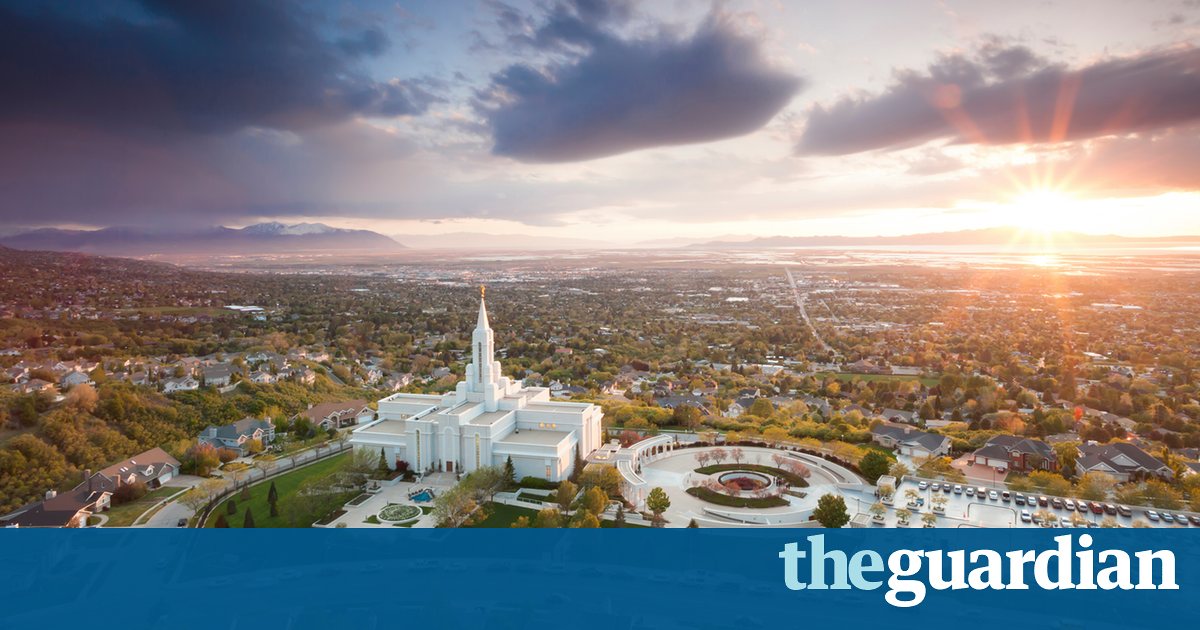
The Mormon church owns vast tracts of US land, and now envisages a huge new city on its Deseret Ranch but at what cost?
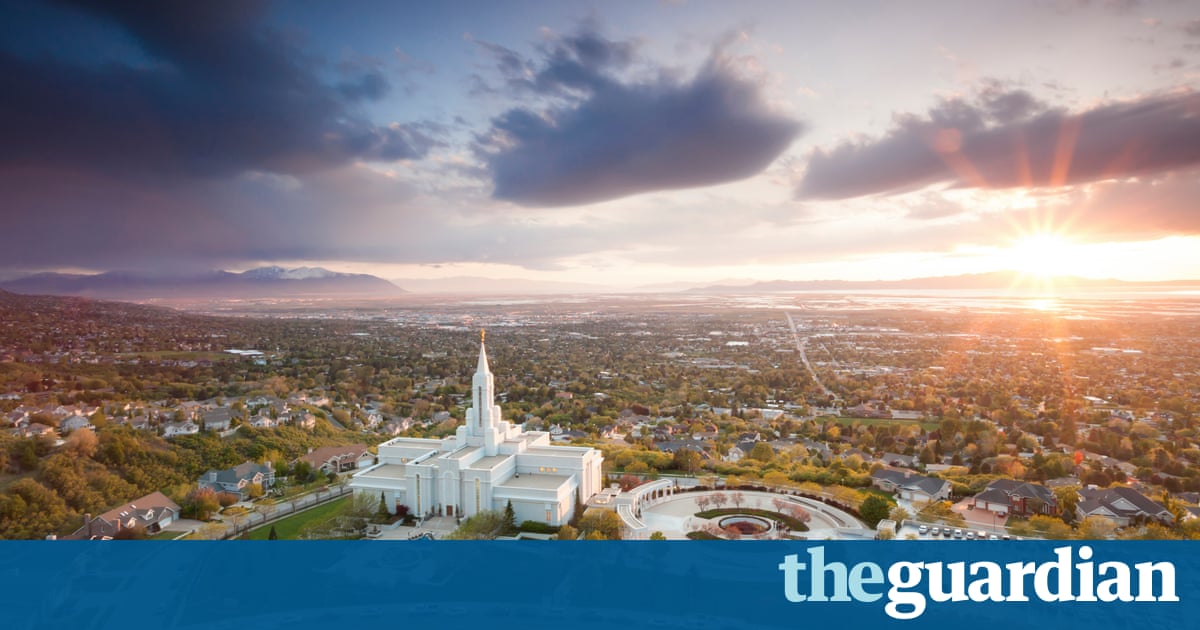
Everything about the Deseret cattle and citrus ranch, in central Florida, is massive. The property itself occupies 290,000 acres of land more than nine times the size of San Francisco and almost 20 times the size of Manhattan. It is one of the largest ranches in the country, held by the one of the biggest landowners in the state: the Mormon church.
On an overcast weekday afternoon, Mormon missionaries give tours of the vast estate. Fields, orange trees and grazing animals stretch as far as the eye can see. While central Florida may be best known for Disney World, the ranch roughly an hours drive away is nearly 10 times bigger. It is home to a jaw-dropping 40,000 cows and has grown oranges for millions of glasses of juice.
Now there are ambitious, far-reaching plans to transform much of this land into an entirely new city, home to as many as 500,000 people by 2080. Deseret has said that while nothing will be built here for decades, its plans are necessary because urban growth in the area is inevitable and the alternative is piecemeal development. A slide from a 2014 presentation explains: We think in terms of generations.
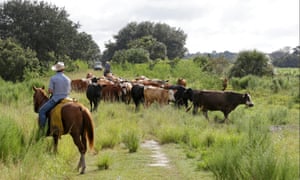
Deserets plans, which were given the green light by local county commissioners in 2015, are thought to be the largest-ever proposed in the state and have attracted high-profile attention. Critics have accused the plans of putting already stressed natural habitats and critical resources, such as water, in further jeopardy.
This is not a typical housing development. It is an entire region of the state of Florida and it is the last remaining wilderness, said Karina Veaudry, a landscape architect in Orlando and member of the Florida Native Plant Society. It is, she stressed, a plan on an unprecedented scale: This project impacts the entire state, ecologically.
For years, environmental groups protested that it was too risky to build so much on such ecologically important land particularly in one of the few areas of Florida that hasnt already been consumed by sprawling developments. We fought it and fought it and fought it, said Veaudry, who described it as nothing less than a David and Goliath struggle.
Except this time, Goliath was part of the property empire of the Mormon church.
Faith and property
The Church of Jesus Christ of Latter-day Saints has long influenced urban developments in America through specific ideas about town planning. In the 1830s, the churchs founder, Joseph Smith, laid out a vision for compact, self-sufficient agrarian cities. These were utopian in conception and have been hailed as a precursor to smart growth planning.
The plans for the Deseret ranch in central Floridahave shone a spotlight on another side of the churchs influence: its investments in land and real estate. Today, the church owns land and property across the US through a network of subsidiaries. Its holdings include farmland, residential and commercial developments, though it remains notoriously tight-lipped about its business ventures.
The church has been buying up land in central Florida since the 1950s, starting with 50,000 acres for Deseret Ranch since expanded almost sixfold. Its most recent major acquisition, by the church-owned company AgReserves, was another 380,000 acres in the states north-western panhandle the strip of land that runs along the Gulf of Mexico. Deseret Ranchs website quotes the late church president, Gordon B Hinckley, as saying that farms are both a safe investment where the assets of the church may be preserved and enhanced and an agricultural resource to feed people should there come a time of need.
Across America, subsidiaries of the church reportedly hold 1m acres of agricultural land. This is thought to include land in Nebraska, Oklahoma, Utah and Texas. Church companies are also thought to hold land outside the US, including in Canada and Brazil. In 2014, when church-owned farms in Australia were put up for sale, reports estimated their worth at about $120m (72.8m).
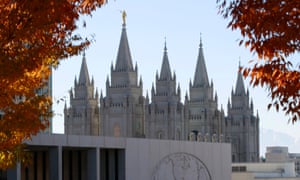
Recent real estate investments by church companies include the 2016 purchase of a 380-unit apartment complex in Texas, estimated to be worth tens of millions of dollars, and, in Philadelphia, a shopping area, a 32-storey apartment block and a landscaped plaza being built across the street from a newly constructed Mormon temple.
In Salt Lake City, where the church has its headquarters, a church company is currently working on a new master-planned community on the citys west side for almost 4,000 homes. Last year, another investment was unveiled: the new high-end 111 Main skyscraper. Goldman Sachs is reportedly signed up as a tenant.
This city was built by Mormons. In the 19th century, early Mormon settlers gave Salt Lake City bridges, miles of roads, rail and other infrastructure. Hundreds of businesses were also set up: banks, a network of general stores, mining companies. The citys Temple Square is filled with statues glorifying the pioneers.
Nearby is a more contemporary monument to the investing and enterprising church: the City Creek Center, a new shopping mall with 100 stores and a retractable glass roof. It cost an estimated $1.5bn. At its grand opening, a church leader cut a pink ribbon and cheered: One, two, three lets go shopping!
The church said its investment in the mall would help revitalise central Salt Lake City as part of a wider multibillion-dollar initiative called Downtown Rising. Bishop H David Burton said it would create the necessary jobs and added that any parcel of property the church owns that is not used directly for ecclesiastical worship is fully taxed at its market value.
The City Creek Center project has been controversial, however even among Mormons. Some current and former church members have questioned why money invested in such projects isnt spent on charitable initiatives instead.
In 2013, Jason Mathis, executive director of Salt Lake Citys Downtown Alliance business development group, said the church was an interesting landlord. Theyre not worried about the next quarter, he explained. They have a much longer perspective they want to know what the city will look like in the next 50 or 100 years.

Black box finances
Projects such as the Salt Lake City shopping centre have certainly focused attention on the churchs investments, but it remains secretive about its revenues and finances.
An entity called Deseret Management Corporation is understood to control many of the churchs enterprises, through subsidiaries focused on different commercial interests including insurance and publishing.
Several church ventures bear the name Deseret itself a term from the Book of Mormon meaning honeybee and intended to represent goals of productivity and self-sufficiency.
In central Florida, the churchs Deseret Ranch is understood to sell cows to Cargill, a Minnesota-based trading company, and oranges to Tropicana, as well as renting land to hunters and other companies.
Deseret, however, declined to confirm this. It said: As a private investment affiliate of The Church of Jesus Christ of Latter-day Saints, Deseret Ranch does not release financial information or details about our production and customers.
The churchs press office in Salt Lake City also did not respond to emails from the Guardian.
Previously, church officials have emphasised that finance for its companies investments do not come from tithing donations (church members are supposed to contribute 10% of their income each year) but from profits from other such ventures.
But these and other claims, even when offered, are also difficult to verify. Ultimately their finances are a black box according to Ryan Cragun, associate professor of sociology at the University of Tampa.
Cragun previously worked with Reuters to estimate in 2012 that the church owns temples and other buildings worth $35bn and receives as much as $7bn in members tithing each year. But he says the church stopped releasing annual financial information to its own members many years ago.
Estimating their total land holdings? Good luck, says Cragun. Nobody knows how much money the church actually has and why theyre buying all of this land and developing land.

A new city for Florida
Over the last half-century, Florida has become something of a laboratory for ambitious and sometimes surreal master-planned communities. In southern Florida, for example, the founder of Dominos Pizza funded the construction of a Catholic town called Ave Maria. Closer to Orlando is the town of Celebration, developed by the Walt Disney Company, where shops on meticulously maintained streets sell French pastries and luxury dog treats.
Across Florida, more new subdivisions and developments are planned. Many of these projects have drawn criticism for their potential impact on Floridas already stressed water resources.
Sprawl is where the money is, and people want homes with big lawns and nearby golf courses, a columnist for the Florida Times-Union newspaper recently lamented. He suggested the state should step in to ban water-hungry grass varieties and introduce stronger planning procedures to limit large-scale developments.
The ranchs plans are the largest of these yet. Indeed, they are thought to be the largest-ever proposed in the state, and this land lies in an area thats been called Floridas last frontier.
In 2015, local Osceola county officials approved the North Ranch sector plan, which covers a 133,000-acre slice of Deseret property. As part of this plan, tens of thousands of these acres have been earmarked for conservation lands, not to be built on; and, in addition, Deseret has insisted that it will also continue ranching operations here for generations in the future.
But most of this land, under the approved plan, could be transformed into a new urban landscape. By 2080, it could be home to as many as 500,000 people. The plan explicitly refers to a new fully functioning city.
It envisages a massive development complete with a high-intensity, mixed-use urban centre and a variety of centres and neighbourhoods. There would be 16 communities and a regional hub with a footprint of around one square mile equal to [that] of downtown Orlando.
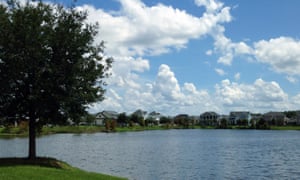
New office blocks, civic buildings, high-rise hotels and apartment buildings are among the structures anticipated, along with new schools, a hospital, parks and a university and research campus. New motorways and rail lines would connect it all to Orlando and cities along Floridas eastern coast.
The document argues that the plan is necessary to prepare for expected population growth. More than 80% of the vacant developable land in the very area where demographic and economic forces are propelling an increasing share of the regions population and job growth is located on Deserets North Ranch, it says.
In an email to the Guardian, Dale Bills, a spokesperson for Deseret Ranch, said it offers a framework for future land use decisions but will not be implemented for decades.
Were not developers, but the sector plan allows us to be involved in shaping what the ranch will look like over the next 50-60 years, Bills said. When growth does come to the region the plan will help create vibrant communities that are environmentally responsible and people-friendly, he said.
The plan also provides for continued farming operations, Bills added, meaning that generations from now, Deseret will still be doing what we love growing food and caring for the land.
Meanwhile, the ranch has set aside another, smaller block of its land for a separate and more immediate project called Sunbridge, to be developed by the Tavistock Group known in the area for its Lake Nona complex of master-planned communities just south-east of Orlandos international airport.

On a weekday afternoon, the still largely empty Lake Nona development is silent. Signs planted by the road proclaim it is where the grass is greener. At the visitors centre, a pair of well-dressed women chat over coffee. A sales agent hands out glossy brochures with aspirational verbs embossed on its cover: DISCOVER. EVOLVE. INNOVATE.
Still under construction, Lake Nona describes itself as a city of the future with super-fast internet connections, one of the top private [golf] clubs in the world and homes ranging from luxury apartments to sprawling estates. Less than an hours drive from the ranch, it offers a potential hint of whats to come.
The damage is done
Until this happened [the ranch] was a quiet neighbour, said Jenny Welch, 54, a registered nurse and environmental activist who lived in the area for decades before leaving earlier this year. When I first moved here in 1980, I thought it was great because it would never be developed. This is such environmentally important land. Its a wildlife corridor. There are wetlands.
Major concerns about the Deseret North Ranch plan have included how much water it will consume, the impact of proposed new roads and the amount of land set aside for conservation.
Veaudry, the Orlando landscape architect, said environmental groups tried to engage with the Deseret plans from the beginning by raising concerns but also suggesting enhanced measures to protect local ecosystems.
But, she said, what was ultimately approved was pretty much the nail in the coffin for decades-long efforts to establish a north-south ecological corridor to allow wildlife and ecosystems to flow across the state. It would put literally a city right in the middle of it, she said.
The new city envisaged for this land wont be constructed overnight. While the overall plan for the area has been approved, more approvals will be needed on specific details. This has not reassured critics.
Florida environmentalist Charles Pattison has argued that the long time frame only makes it harder to monitor the project. People involved in this today will not be around to see [it] through to completion, as many new administrative and elected officials will come and go over that time, he said.
The main guidelines, the amount of conservation, how wide the buffers have to be, all of that is already approved and set, said Veaudry. As far as I understand it, the damage is done. Locals know what happened. The Mormon church is the largest landowner here. And they have enormous resources.
The second half of Claire Provosts exploration of Mormon city planning will appear tomorrow. Follow Guardian Cities on Twitter and Facebook to join the discussion, and explore our archive here